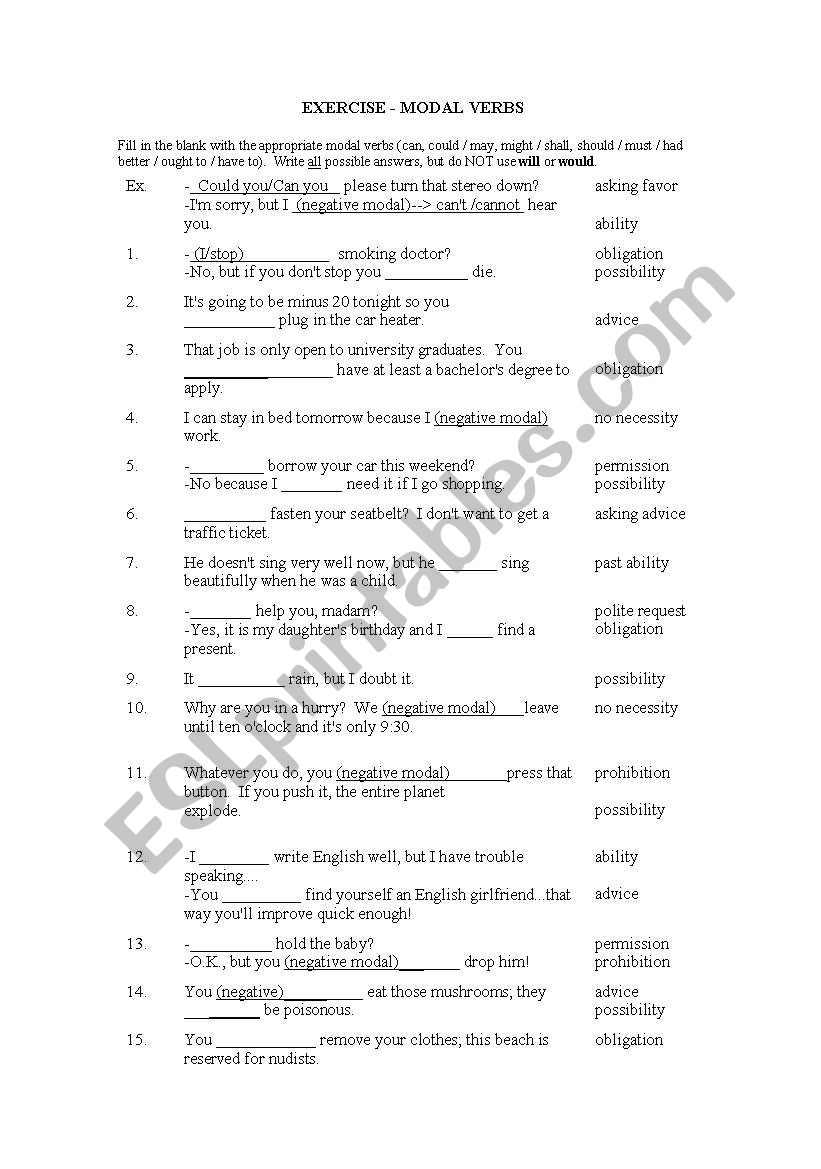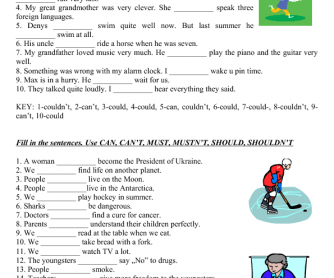

In the end, you can go over their answers together, and correct their grammar as you go along. Students will have to get creative with their modal verbs to decide what they mean and can work in pairs to write their own ideas. Give out a selection of weird and wacky signs, such as this one from the Travel Channel. To finish up the class, move on to something more fun and more challenging. They can use the given modal verbs to write sentences for each one.

Remember, these should be signs that they’re familiar with already, they just need to put their meanings into English. These could be road signs, safety signs or signs you might find in the classroom. This should prompt them to give you “you must not smoke.”įrom here, you can teach a selection of modal verbs, such as “have to,” “must” and “mustn’t.”Ĭreate a worksheet or PowerPoint presentation which provides a selection of signs. Then, ask your students how they could make the sentence stronger. This should elicit “you can’t smoke,” or something to that effect. If they say “no smoking,” ask them to elaborate with a full sentence. Start by showing or drawing a picture of a no-smoking sign to your class and asking them what it means. It uses real-life examples that students see around them every day, so they should have no problem picking up the grammar and putting it into context. Note that these verbs, like all modal verbs, are followed by an infinitive without to.ĭo this exercise to test your grammar again.This exercise is great for teaching how to use modal verbs for prohibition and obligation. It can't be easy for him, looking after three kids on his own. We use can't when we feel sure that something is not possible. They all have the same meaning, but may is more formal than might and could. We regret to inform you that some services may be delayed due to the bad weather. We use might, may or could to say that we think something is possible but we're not sure. You must be freezing out there! might, may, could He must live near here because he always walks to work.Ĭome inside and get warm. We use must when we feel sure that something is true or it's the only realistic possibility. This page focuses on making deductions about the present or future. The modal verb we choose shows how certain we are about the possibility. We can use modal verbs for deduction – guessing if something is true using the available information. Modals – deduction (present): Grammar test 1 You can't be bored already! You've only been here five minutes. They might be at work or they could be in the car. Look at these examples to see how must, might, may, could and can't can be used.


 0 kommentar(er)
0 kommentar(er)
